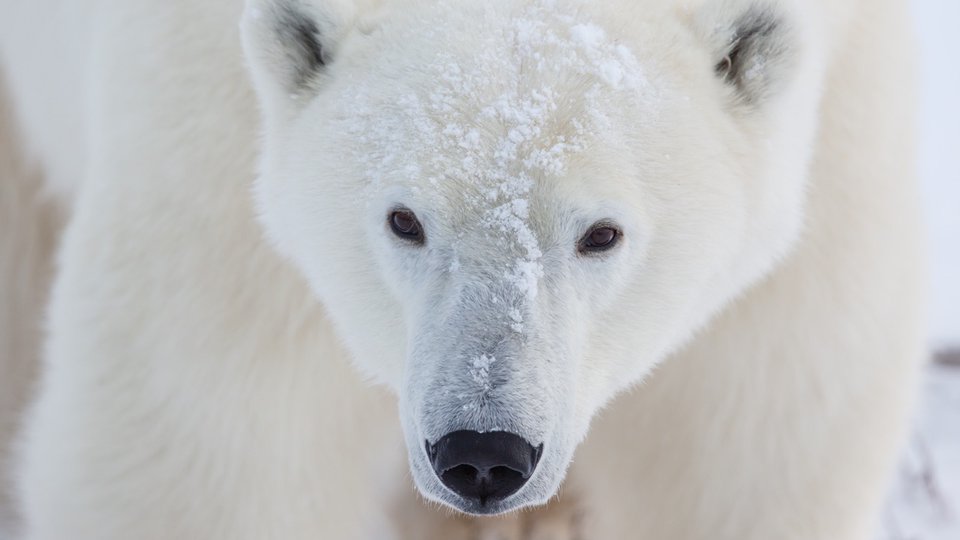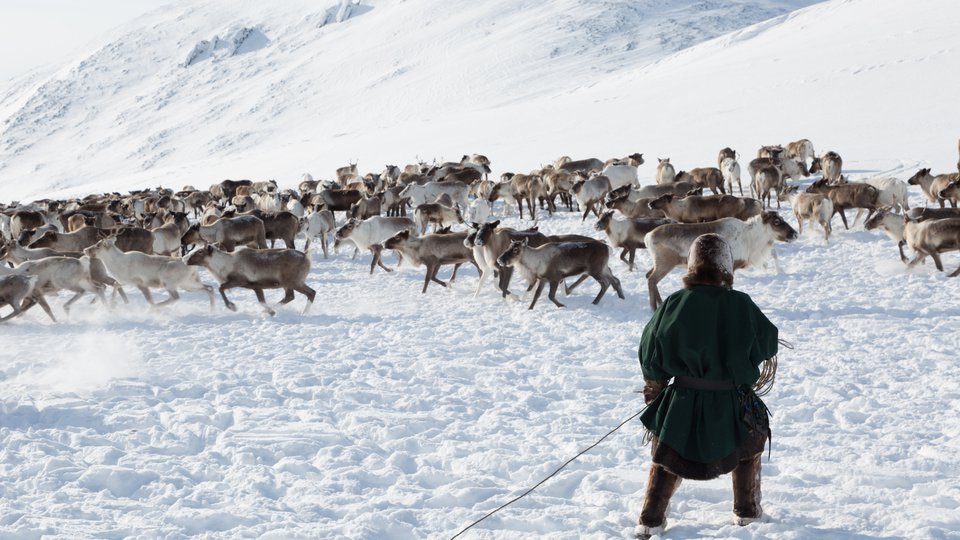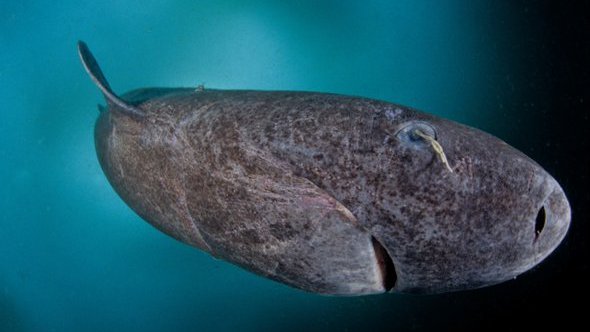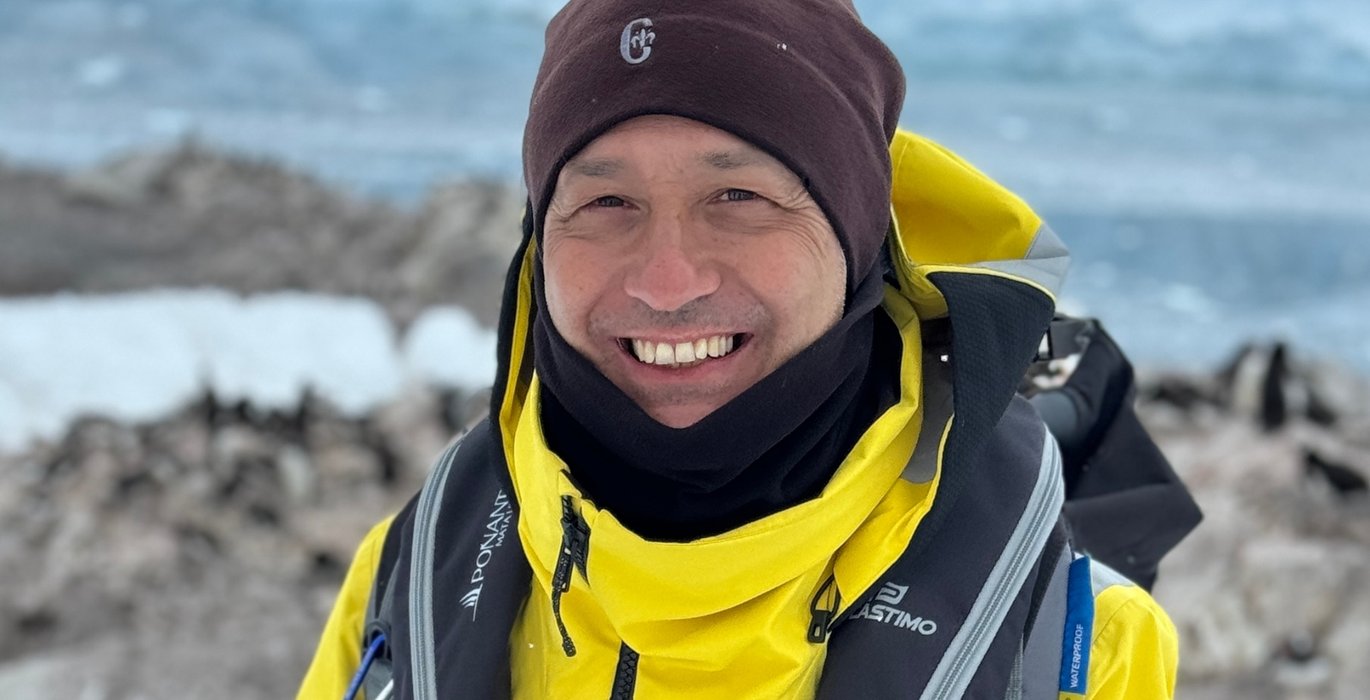
I met Renato Granieri as we boarded a small cruise ship in Ushuaia at the southern tip of Argentina, preparing to set sail for Antarctica. A talented wildlife photographer, Granieri is passionate about capturing the natural beauty of the world’s most remote regions.
Born in Sardinia and now living in London, Granieri is driven by a limitless wanderlust. He has taken his cameras to more than sixty countries in his bountiful career as a photographer.
From the beginning, he specialized in nature and travel photography. His first Antarctic voyage as a tour photographer was in 2015, and in 2018 and 2023, he won the National Geographic Traveler Grand Prize for his photography.
Granieri is also a tour leader, offering tours through his travel company, Photography Holidays. As Abercrombie and Kent’s onboard wildlife photographer, he shares his inspiring story and valuable photography tips with passengers while preparing them to venture into Antarctica’s crisp, cold air.
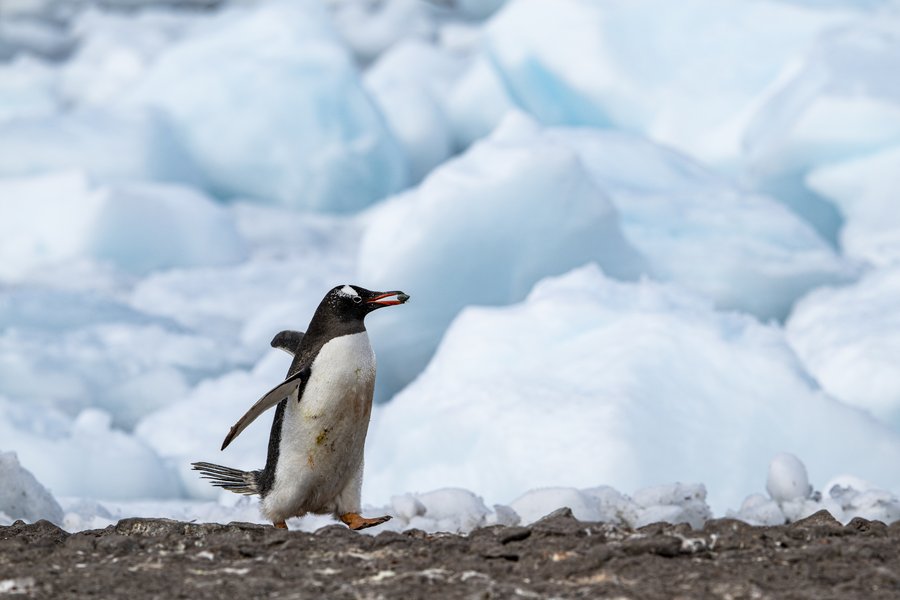
Gentoo Penguin with pebble at Mikkelsen Harbour. (Photo: Renato Granieri)
A Career Fuelled by Passion
Granieri has no formal training as a photographer. Yet, he has received numerous awards for his wildlife photography in Antarctica, the Arctic, and Sierra Leone. He attributes his success to his bold decision to quit his corporate job and pursue his passion for photography.
“I made the decision to quit and start a career in nature photography. I can proudly say that I have been enjoying life as a wildlife photographer since 2014. Photography has given me the opportunity to have a much more dynamic existence, to travel the world and see things differently. I don’t see it as a job, [but]rather a thrilling journey.”
His journey to photography wasn’t planned out. “I used to have office jobs working for big companies such as EMI Music and the BBC in market research but started to realize that my hobby had the potential to turn into an opportunity. I have an unusual story because I hadn’t touched a camera until I bought my first DSLR in 2008. My partner is a travel editor, and we were travelling a lot, and after a while, she started to use my photos for publication.”
His enthusiasm and passion were evident as he explained techniques for different types of cameras and smartphones and how to use them for taking photographs in a unique environment.
When discussing his choice of subjects, Granieri revealed his passion for capturing wildlife and cultures in remote regions. He’s particularly drawn to the Arctic and Antarctica due to their remoteness, silence, and unique light.
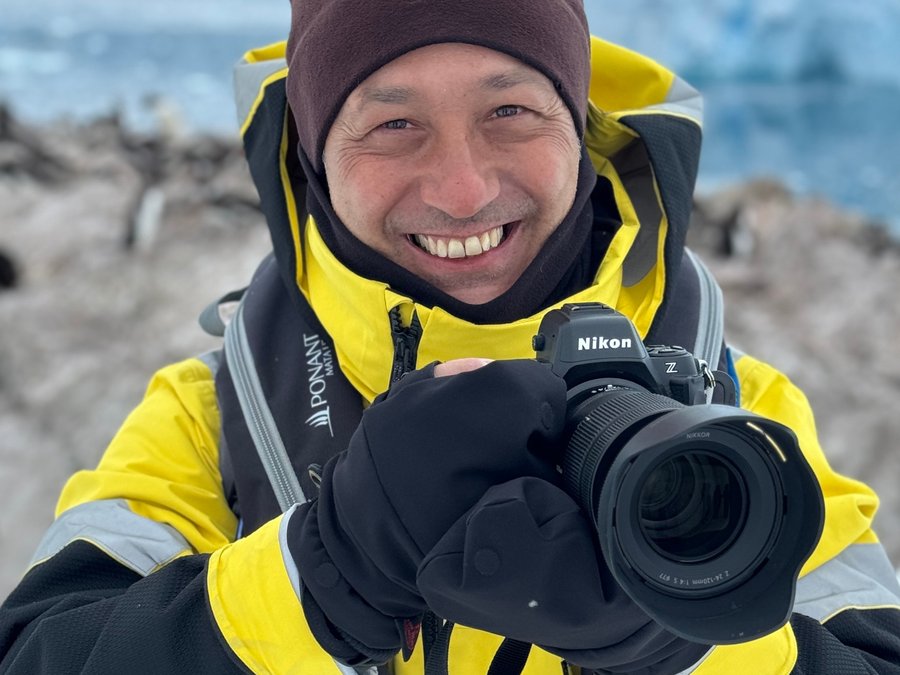
Photography has given me the opportunity to have a much more dynamic existence, to travel the world and see things differently. (Photo: Renato Granieri)
Capturing the Beauty of Remote Regions
Granieri believes that successful images are the result of planning, good light, and the photographer’s vision and skills.
“Having a good camera certainly helps, and there are definitely some useful items [in the] kit that will greatly aid your photography and maximize photo opportunities.”
According to Granieri, “remote locations can be physically demanding, so it’s essential to plan and prepare accordingly to capture stunning images.” He stressed that proper clothing is critical when photographing in extreme weather.
“To spend several hours outside in these conditions, it is essential to dress appropriately, not only for survival but also to ensure you feel comfortable enough to work effectively,” he said. “It’s essential to plan what you want to achieve so you can choose the right equipment and prepare accordingly. I always carry two cameras and pre-select my lenses based on the subject type and the sort of pictures I want to shoot. Once ashore, I would never change lenses in the field.”
He emphasized the importance of allowing his equipment to acclimatize to any change in ambient temperature. “I will often leave everything in my camera bag for a couple of hours before opening it so the contents have time to adjust. This ensures my equipment is ready to perform at its best, even in the harshest conditions.”
He added, “It’s crucial to regularly review your work, seeking areas for improvement and maintaining a critical eye. And, of course, don’t forget to keep exploring and travelling – it’s the best way to push your creative boundaries and expand your photographic skills.”
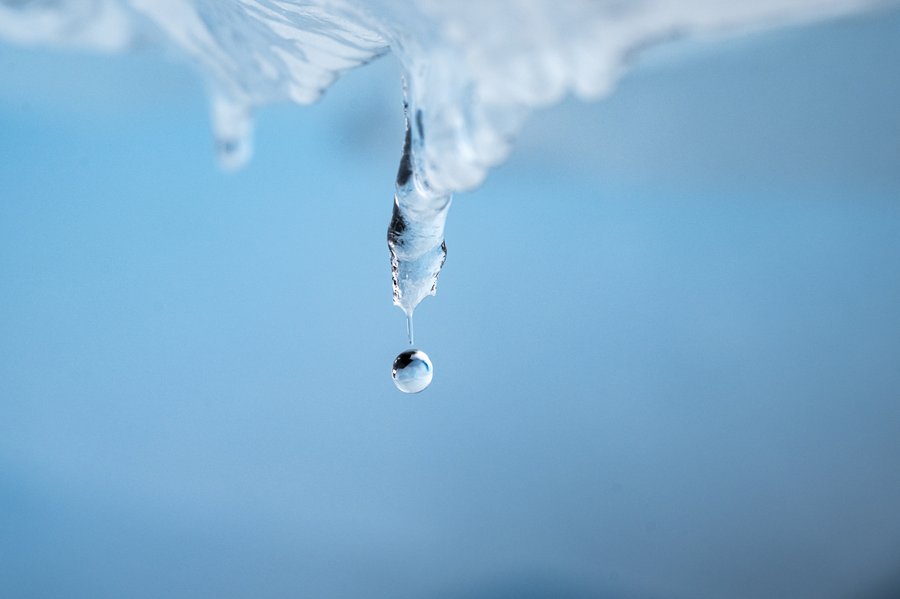
Mikkelsen Harbour Water drop. (Photo: Renato Granieri)
The Allure of Cold Climates
Despite the harsh conditions, Granieri finds himself increasingly attracted to cold climates. He has coped with temperatures as low as --25°C in places including the wintry tundra of Svalbard and freezing, low-oxygen environments of Bolivia’s mountain regions.
“Despite the fact that I have warm Sardinian blood in my veins, I find I am attracted to cold climates more and more. Since I often find myself shooting in temperatures of minus 25 degrees Celsius, sometimes even colder. Depending on the conditions, I’ll wear layers or a balaclava to shield myself from the harsh cold and wind.”
He also fondly recalled his experiences in northern Norway, particularly Svalbard, where he found peace and tranquillity in the landscape.
“In Svalbard, I had the opportunity to photograph polar bears in their natural habitat. It was a thrilling experience and one that I will never forget. The Arctic landscape is breathtakingly beautiful, with its snow-capped mountains and frozen tundras.”
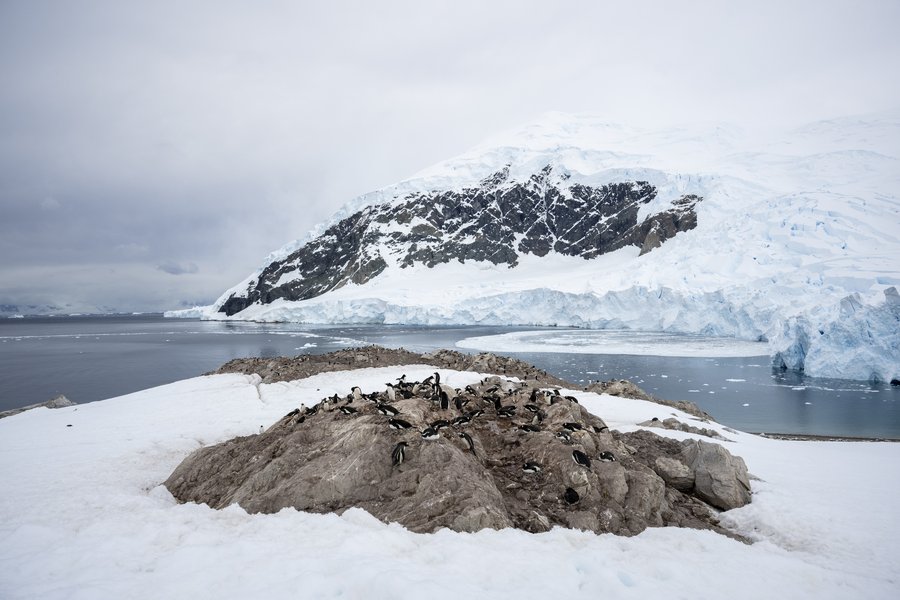
Neko Harbour Gentoo penguin. (Photo: Renato Granieri)
Tips for Aspiring Photographers
When asked for tips, Granieri emphasized the importance of building one’s vision.
“Put aside the technical knowledge of the camera and its features, and focus more on building your own vision. Be bold and determined to achieve your goals. Get inspired by the work of others by visiting photography exhibitions and events. And take part in photography competitions as they will help you understand where you need to be in this stimulating art form,” he said.
According to Granieri, setting goals, experimenting with techniques, and being bold and creative are crucial. He advised against shooting in bright sunshine, as dramatic skies and challenging weather often result in more interesting pictures. “Try to capture the drama and mood of the scene, and always remember, the best camera is the one you have with you,” he said.
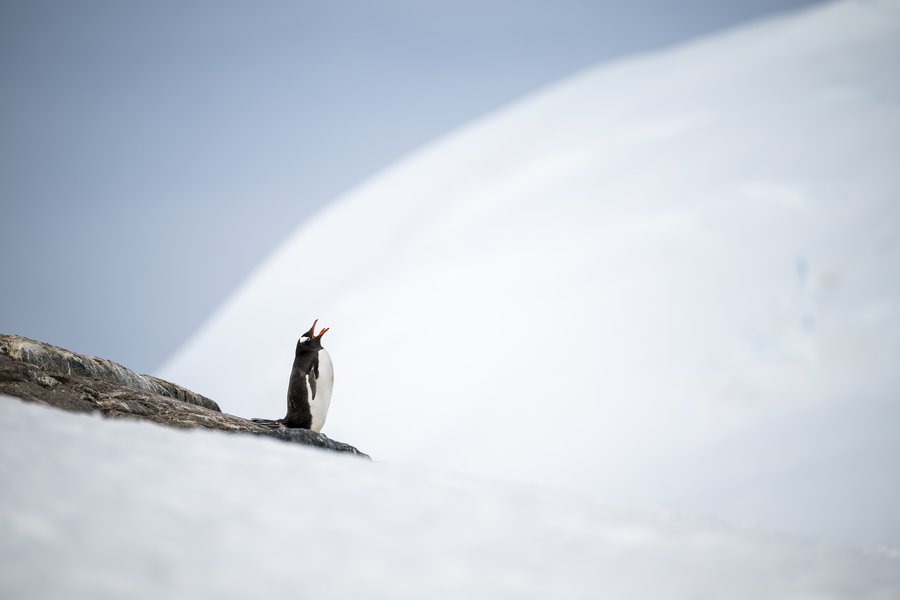
Gentoo Penguin howling at Mikkelsen Harbour. (Photo: Renato Granieri)
Inspiring the Next Generation
Through his dedication to photography and eagerness to share his insights, Granieri has become a role model for photographers globally. His stunning images and inspiring messages have captured the hearts of many, leaving a lasting impact on the world of wildlife photography. He hopes to share his knowledge with other photographers and lead guided tours.
Reflecting on his journey, he says, “I used to have plenty of money and no time, but now I have plenty of time and no money. But life is more enjoyable now.”
As we reflect on Renato Granieri’s remarkable career, one thing is clear: his passion for wildlife photography knows no bounds. From the Arctic to Antarctica, his photographs capture the beauty and majesty of the natural world. His legacy will continue to inspire photographers everywhere to push the boundaries of their creativity and explore the world around them.
You can view Granieri’s work at renatogranieri.com
